Part of a series of articles titled Park Paleontology News - Vol. 15, No. 2, Fall 2023.
Article
Sister Parks: Triassic reflections across the Equator at Petrified Forest and Ischigualasto

Dr. Adam Marsh, Lead Paleontologist
Petrified Forest National Park
The Triassic Period was a time of evolutionary experimentation all around the world. Bipedal crocodilian ancestors, the first flying vertebrates, a variety of armored reptile groups, and early dinosaurs and their closest relatives shared ecosystems across Pangea (Dalla Vecchia, 2013; Desojo et al., 2013; Nesbitt et al., 2013; Marsh and Parker, 2020), ultimately to experience one of the planet’s most severe ecological disasters before the beginning of the Jurassic Period. The incompleteness of the global fossil record requires understanding the story of Triassic life by incorporating scientific data from far-flung places that share geologic and biologic histories. Luckily, nations all around the world have set aside protected places of paleontological significance to preserve those shared histories, like Petrified Forest National Park (PEFO) in the United States and Ischigualasto Provincial Park (IPP) in Argentina.
PEFO was first established as a U.S. national monument by President Theodore Roosevelt in 1906 to preserve the fossils of a “Mesozoic fossil forest”, acknowledging the significant accumulation of Late Triassic petrified wood and the vertebrate and invertebrate fossils of the Chinle Formation. Similarly, IPP was set aside in 1971 by the Argentinian province of San Juan to protect the Late Triassic fossils within its boundary of the Los Rastros Formation, Ischigualasto Formation, and Los Colorados Formation, and along with its neighbor Talampaya National Park it was declared a UNESCO World Heritage Site in 2000 (PEFO has been on the tentative list since 2008). Even in the Late Triassic, PEFO and IPP were on opposite sides of the Equator, and they each provide unique but complimentary paleontological data that help us understand the period of evolutionary experimentation at the end of the Triassic as well as the origination of our modern animal groups. To compare, the Ischigualasto Formation at IPP spans ~231–226 Ma (Colombi et al., 2021) and preserves some of the earliest dinosaurs like Eoraptor and Herrerasaurus, but also bizarre beaked reptiles called rhynchosaurs and mammal relatives like Ischigualastia and Exaeretodon (Martinez et al., 2012), while PEFO spans ~228–208 Ma (Rasmussen et al., 2020) and preserves many species of long-snouted phytosaurs, large-bodied amphibians called metoposaurs, and trilophosaurid and malerisaurine reptiles (Martz and Parker, 2010; Marsh et al., 2022). Each park has in common the armored reptiles called aetosaurs and the enigmatic shuvosaurids, bipedal crocodilian-line archosaurs that when first discovered in western Texas were thought to represent Triassic ornithomimid dinosaurs (Chatterjee, 1993).
The paleontological and geological resources are so similar in the two parks that nearly two decades ago Dr. William Parker at PEFO began exploring what it would take to establish a sister park arrangement between PEFO and IPP, and with the help of the Province of San Juan and the U.S. State Department, on July 31, 2023 the two parks formally signed such an arrangement during a sunset ceremony at a prominent overlook at IPP. PEFO Park Manager Jeannine McElveen, Chief of Interpretation Sarah Herve, Resource Stewardship and Science Program Manager Dr. William Parker, and Lead Paleontologist Dr. Adam Marsh received an Albright-Wirth grant to travel to northern Argentina to meet with IPP administration, rangers, and scientists to share ideas, discuss challenges, and begin collaborations that will connect the two parks through interpretation, park policies, museum exhibits, and science. The PEFO staff were accompanied by IPP Park Coordinator Emilio Fernandez, Deputy Coordinator ‘Richard’ Burgoa, Rangers Angie Elizondo and Edén Melián, Dr. Oscar Alcober, the Director of the Museum of Natural Science at the National University in San Juan, Marcelo Fretes, San Juan’s Secretary of Institutional Relations, and Angeles Coscolla from the U.S. Embassy in Buenos Aires.
After travelling for two days through Phoenix, Houston, Buenos Aires, and San Juan, the PEFO contingent spent a day in Talampaya National Park observing the Early Triassic and Middle Triassic sedimentary rocks exposed in a tall canyon, local wildlife called guanacos (llama relatives) and maras (jackrabbit-sized capybara relatives), and petroglyphs made by local Indigenous peoples. We then spent the next two days touring Ischigualasto Provincial Park, including their museum exhibits, guided “circuits” through the fossiliferous badlands of the park, an interpretive center built over a paleontological excavation, and an area to be opened soon to public tours that features impressive rock art made by Argentina’s historic cattle drivers. One of the most meaningful events we were invited on was a late-night hike through the “Valley of the Moon” during a full moon, culminating in empanadas and refreshments in the badlands.
PEFO is excited to host the IPP staff in Arizona and early talks are underway to draft an additional sister park arrangement with Talampaya National Park, which shares a border and rich geological and paleontological resources with IPP. The paleontological story told by fossils from the Late Triassic begins at Ischigualasto and ends at Petrified Forest, and there is a lot the two parks can share and learn from one another, including how our modern animal lineages survived the mass extinction at the end of the Triassic Period, how to minimize resource damage and theft, how to best distill complex academic questions and data into understandable museum exhibits and interpretive events, and what it means to be a “fossil park”.
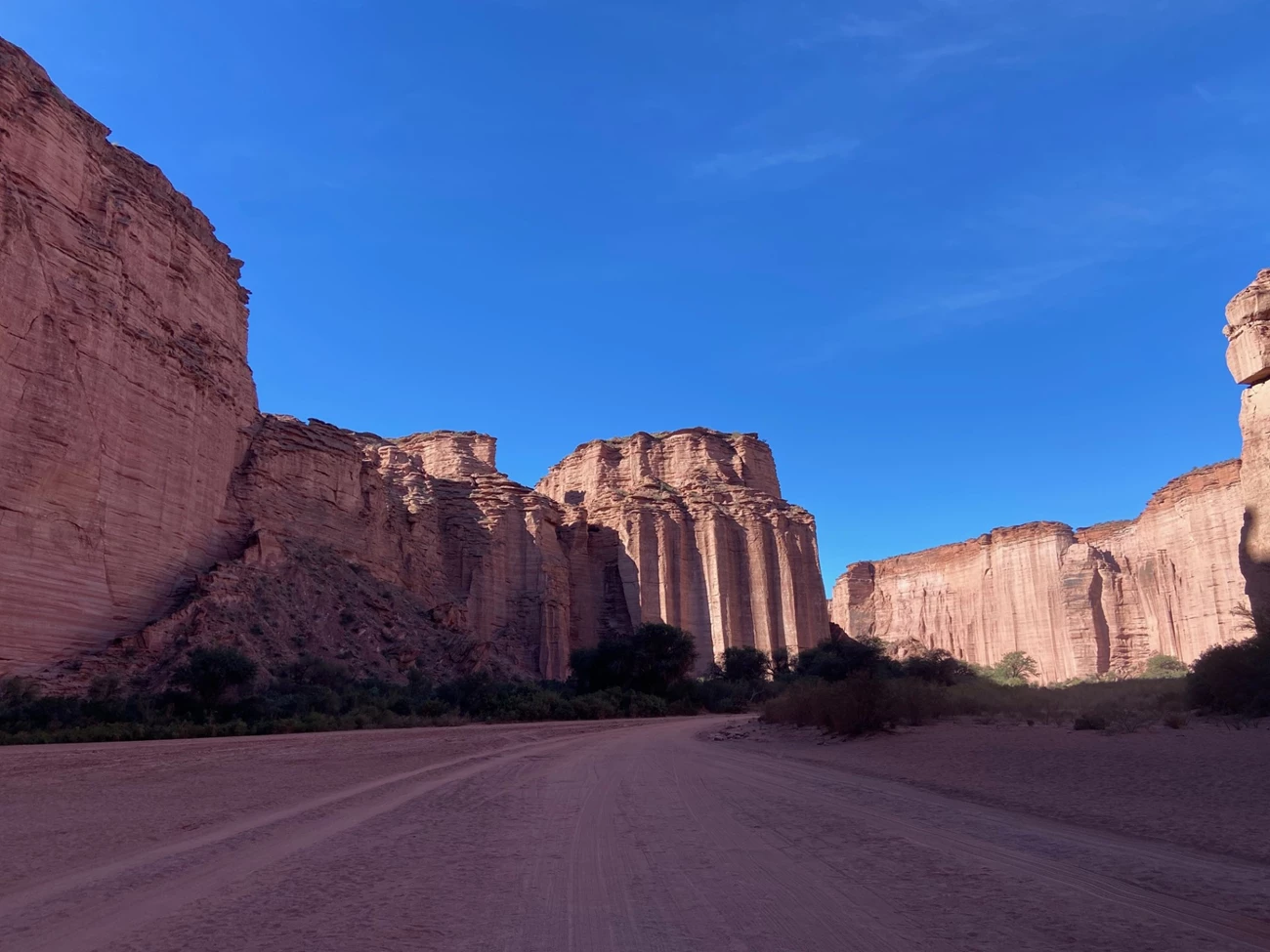
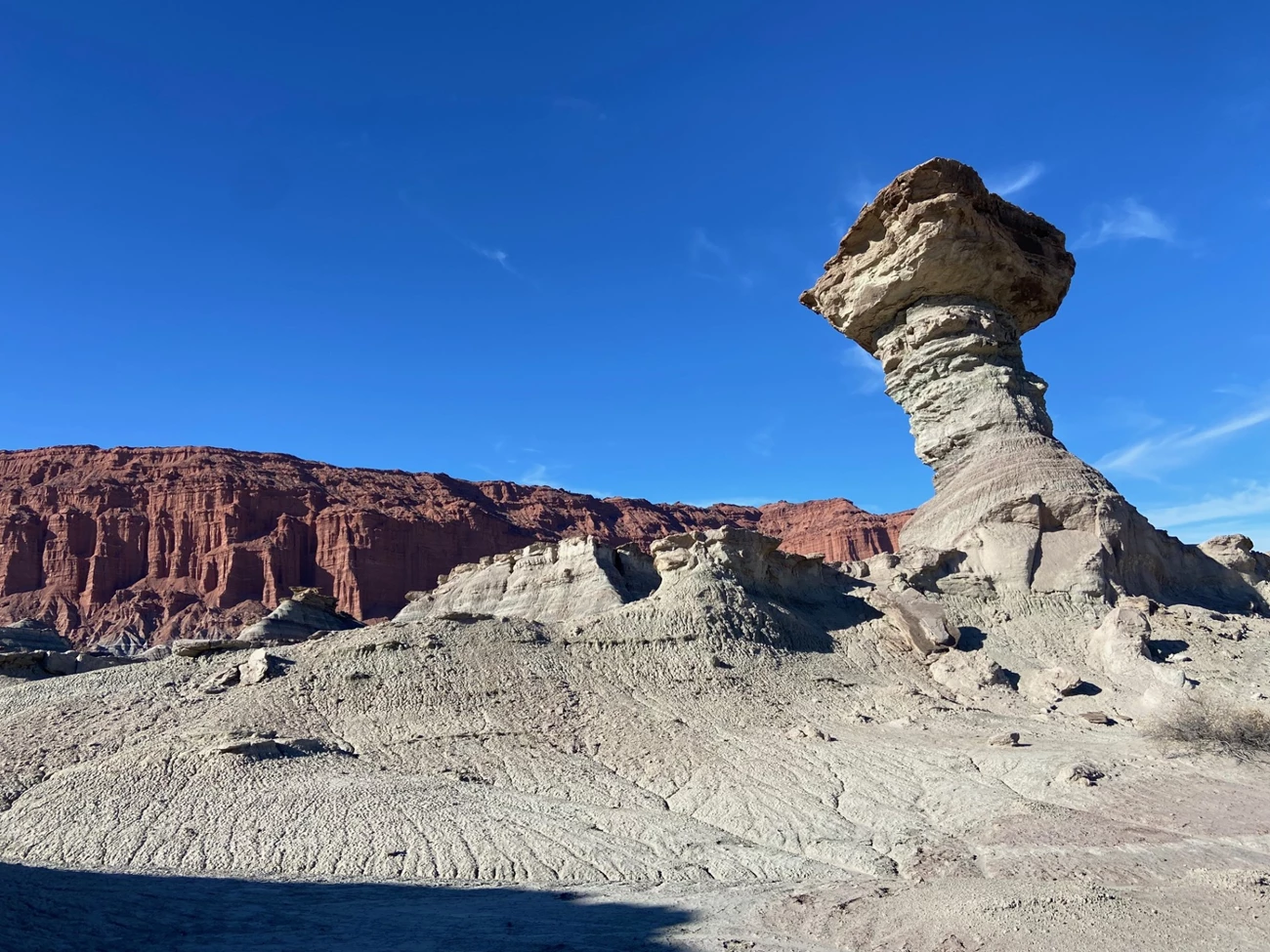
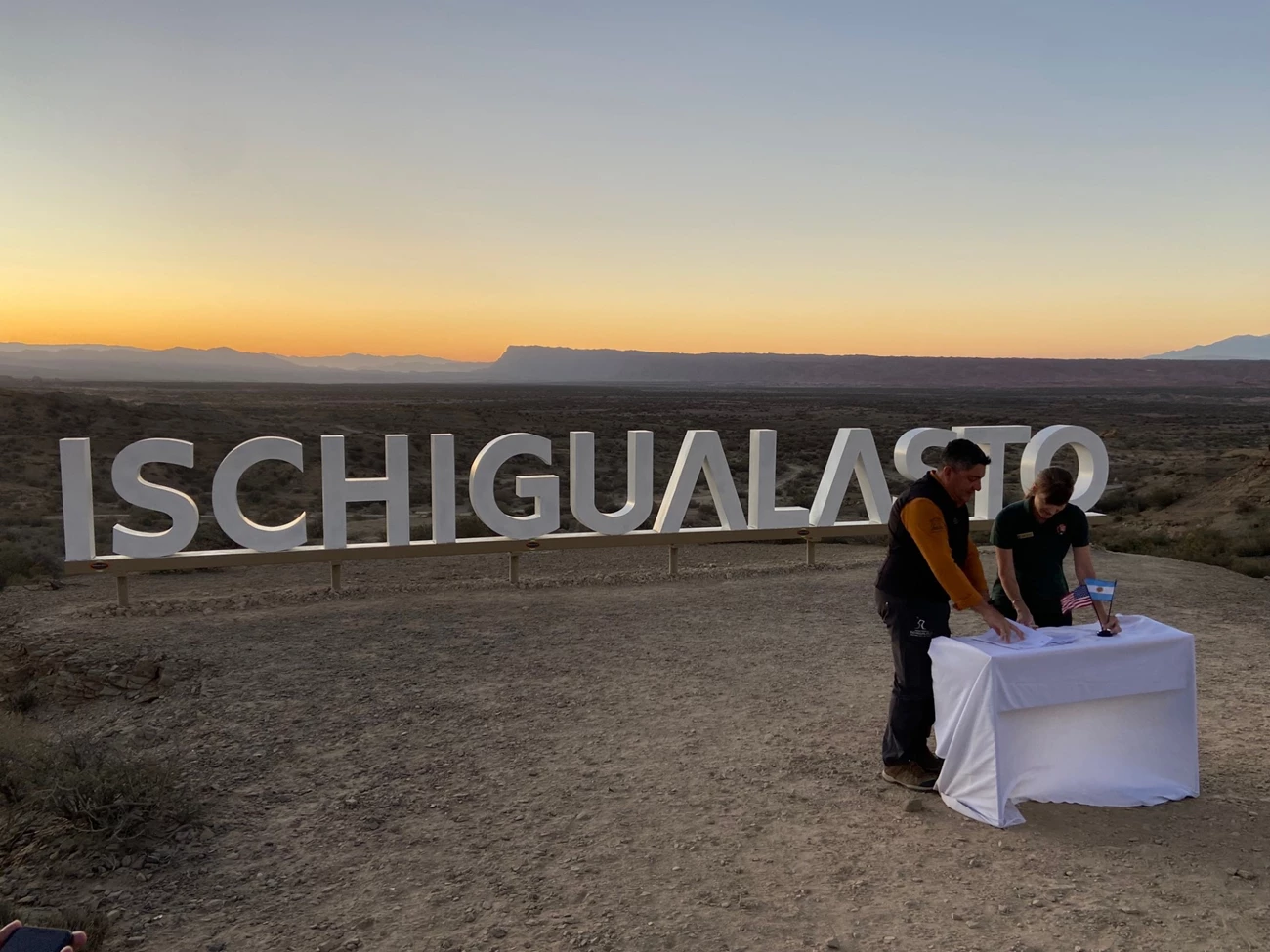
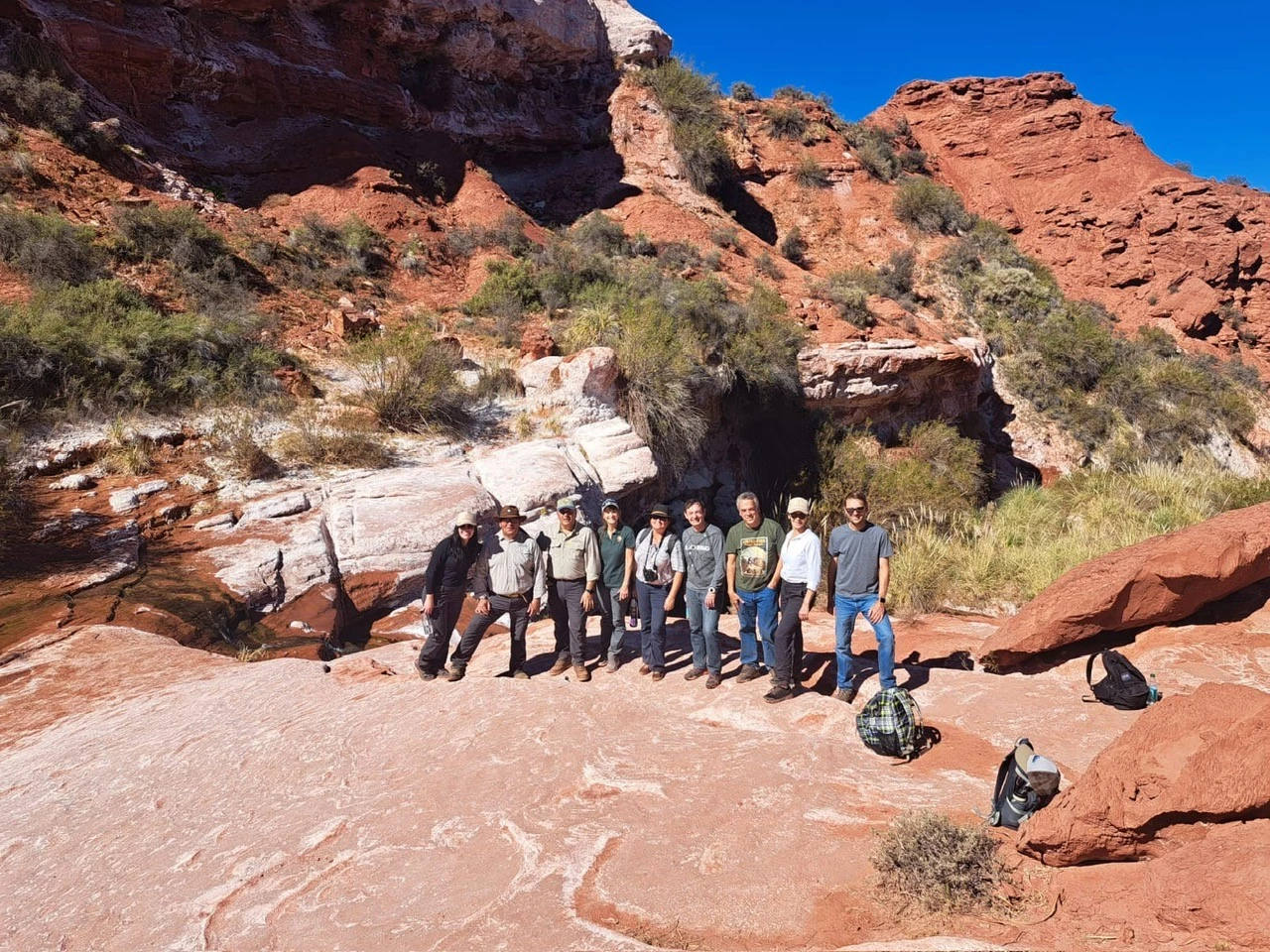
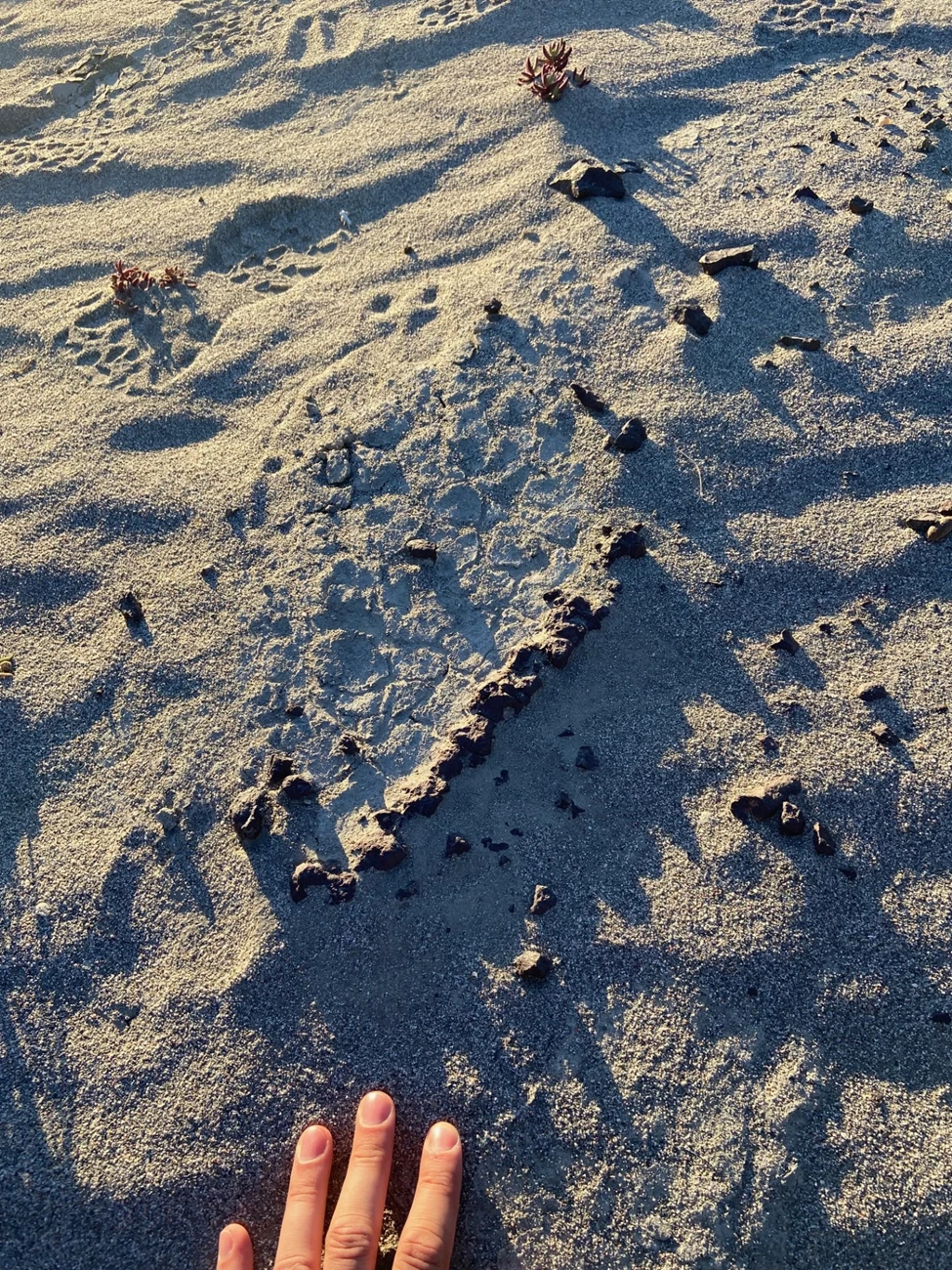
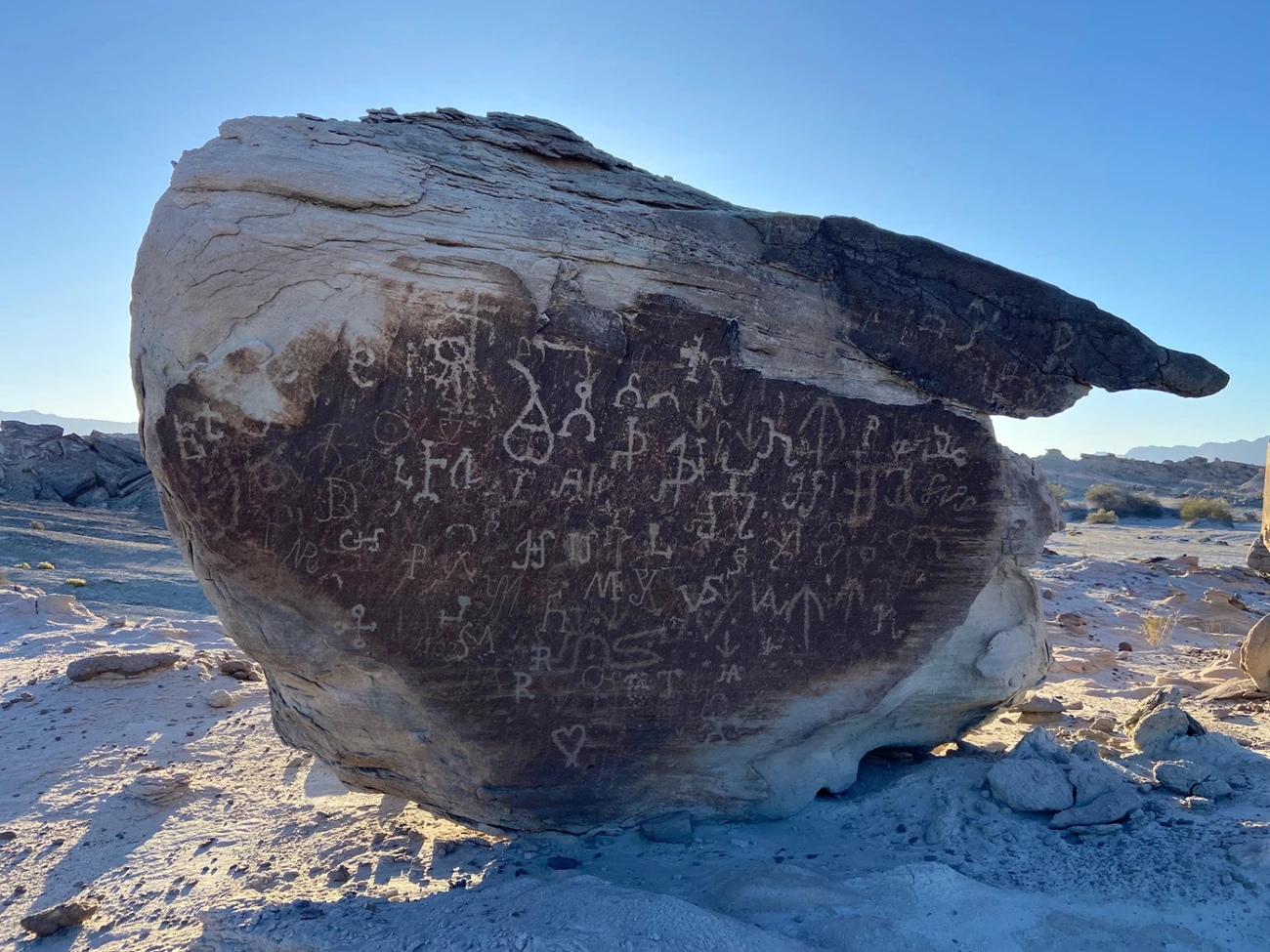
References
-
Chatterjee, S. 1993. Shuvosaurus, a new theropod. National Geographic Research Explorer 9:274-285.
-
Colombi, C., R. N. Martínez, S. N. Césari, O. Alcober, C. O. Limarino, and I. Montañez. 2021. A high-precision U-Pb zircon age constraints the timing of the faunistic and palynofloristic events of the Carnian Ischigualasto Formation, San Juan, Argentina. Journal of South American Earth Sciences 111:103433.
-
Dalla Vecchia, F. M. 2013. Triassic pterosaurs. Geological Society, London, Special Publications 379:119-155.
-
Desojo, J. B., A. B. Heckert, J. W. Martz, W. G. Parker, R. R. Schoch, B. K. Small, and T. Sulej. 2013. Aetosauria: a clade of armoured pseudosuchians from the Upper Triassic continental beds. Geological Society, London, Special Publications, 379:203–239.
-
Marsh, A. D., and W. G. Parker. 2020. New dinosauromorph specimens from Petrified Forest National Park and a global biostratigraphic review of Triassic dinosauromorph body fossils. PaleoBios 37:1–56.
-
Martz J. W., and W. G. Parker. 2010. The Late Triassic (Norian) Adamanian-Revueltian tetrapod faunal transition in the Chinle Formation of Petrified Forest National Park, Arizona. Earth and Environmental Science Transactions of the Royal Society of Edinburgh 101:231–260.
-
Martinez, R. N., C. Apaldetti, O. A. Alcober, C. E. Colombi, P. C. Sereno, E. Fernandez, P. Santi Malnis, G. A. Correa, and D. Abelin. 2012. Vertebrate succession in the Ischigualasto Formation. Journal of Vertebrate Paleontology 32 (Memoir 12):10–30.
-
Nesbitt, S. J., S. L. Brusatte, J. B. Desojo, A. Liparini, M. A. de França, J. C. Weinbaum, and D. J. Gower. 2013. Rauisuchia. Geological Society, London, Special Publications 379:241–274.
-
Rasmussen, C., R. Mundil, R. B. Irmis, D. Geisler, G. E. Gehrels, P. E. Olsen, D. V. Kent, C. Lepre, S. T. Kinney, J. W. Geissman, and W. G. Parker. 2020. U-Pb zircon geochronology and depositional age models for the Upper Triassic Chinle Formation (Petrified Forest National Park, Arizona, USA): implications for Late Triassic paleoecological and palaeoenvironmental change. Geological Society of America Bulletin 133:539–558.
Related Links
-
Petrified Forest National Park (PEFO), Arizona—[PEFO Geodiversity Atlas] [PEFO Park Home] [PEFO npshistory.com]
Last updated: September 25, 2023
